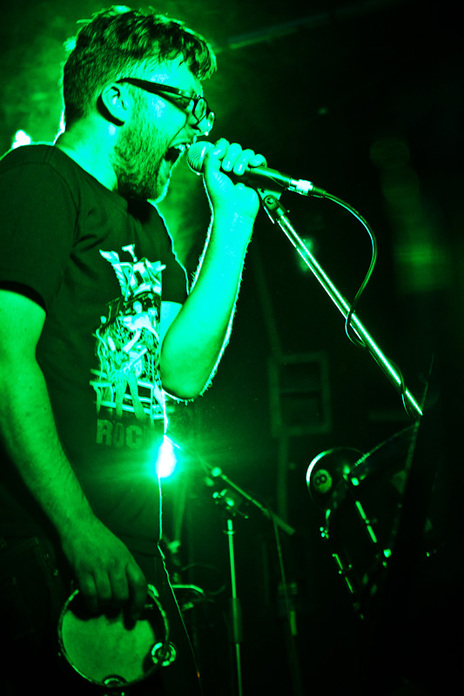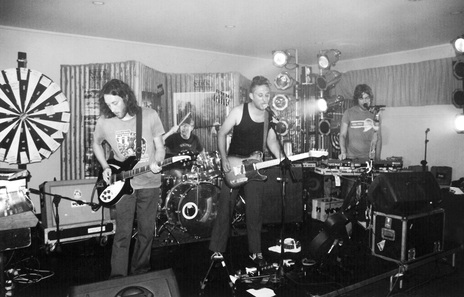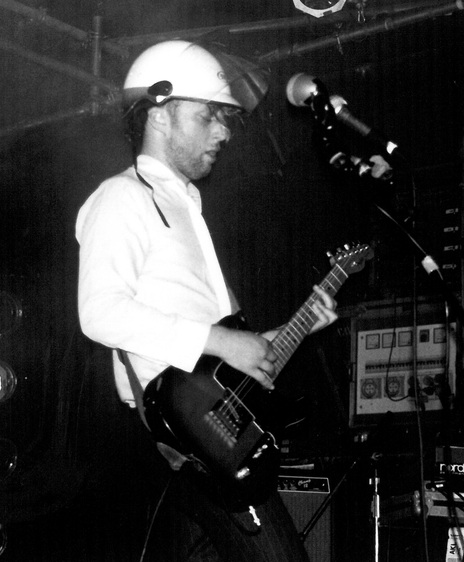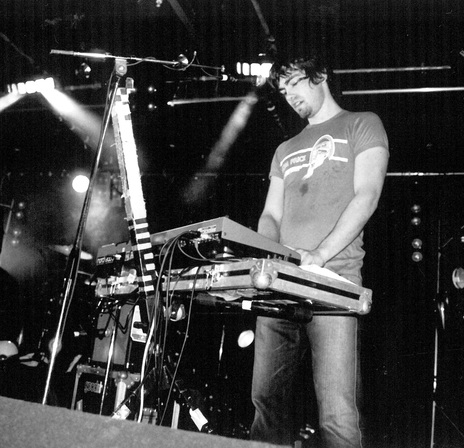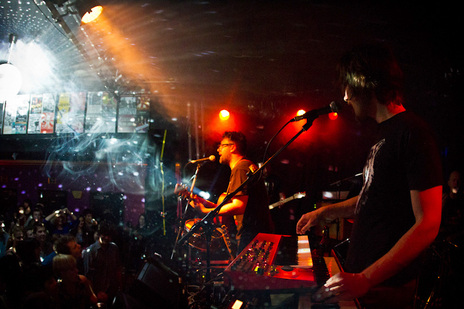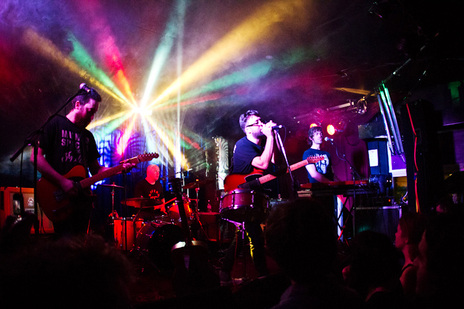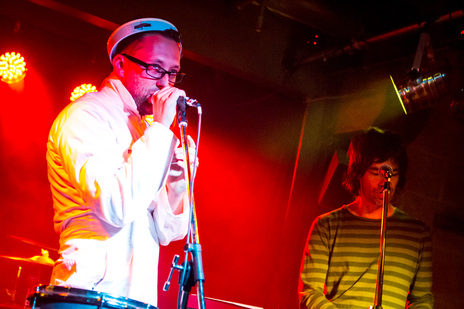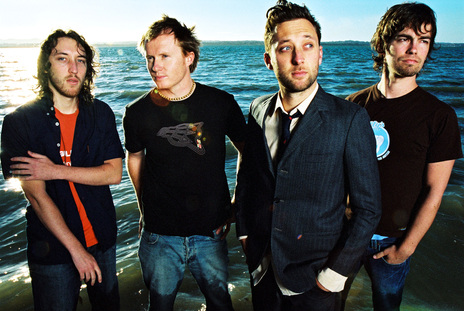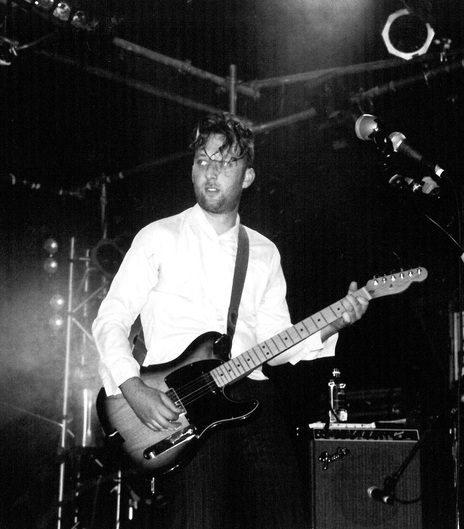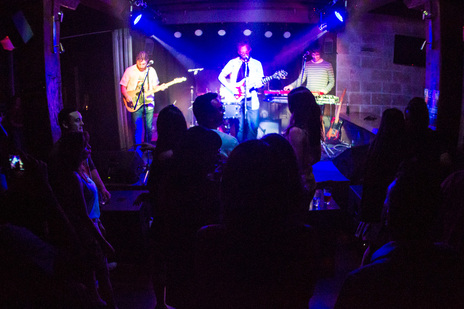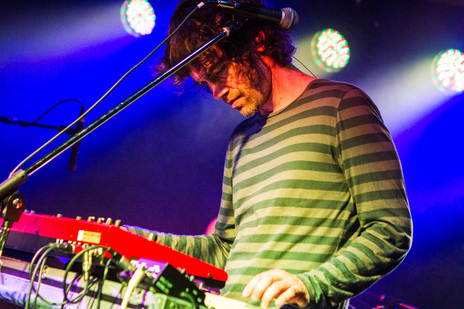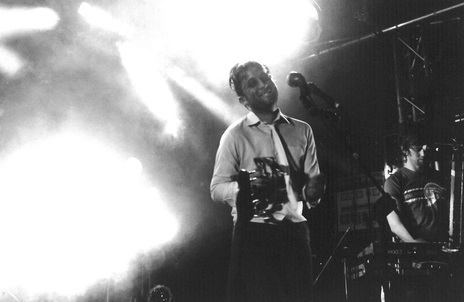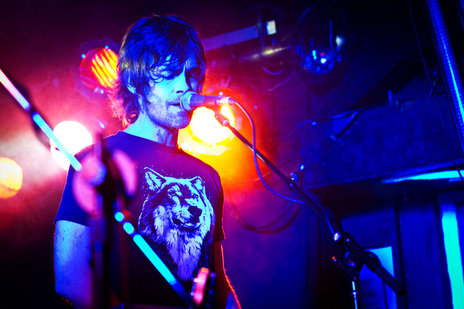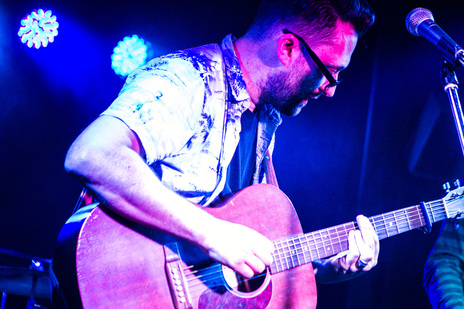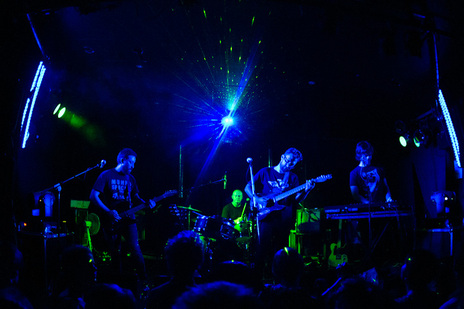The genesis of the band were the Fisher brothers Murray and Rodney, who grew up in New Plymouth. They were living in Auckland when their friend Gareth Thomas moved back from Wellington where he’d been working as an architect. His new flat had no room for his computer recording set-up, so he left it with Rodney, planning to record music with him. Murray took an interest, and when it turned out that he had a sharp natural talent for digital recording, he was brought on board as well.
Rodney was sitting around one day, trying to think of a band name, when his father happened to walk into the room and look at the top he was wearing: "Good shirt!" he said, and the name stuck. This phrase also inspired the song ‘Green’, which they entered into an “amateur track competition” run by alternative rock station, 9inety6dot1. The manager at the station, Grant Hislop, loved the track and asked to be their manager, suddenly turning their joke band into a reality. Hislop brought a great deal of industry knowledge to the table – he was the person behind The Rock radio station (which he eventually sold on) and ran his own label in Hamilton.
‘Green’ received high rotate on student radio, helping give the band their first Top 20 hit (it reached No.12).
The band line-up was solidified by the addition of drummer Mike Beehre, who was previously in a covers band with Rodney and Gareth (the unfortunately named “Trouser Weasels”). ‘Green’ received high rotate on student radio, helping give the band their first Top 20 hit (it reached No.12).
One of the original strengths of the band was that they had two frontmen – Rodney was a born entertainer with a frenetic energy onstage, while Thomas, tucked behind a couple of synths, had a more relaxed charisma. Both were songwriters and Murray also came up with song ideas, giving them a wealth of riffs and melodies that had to be forged together in each track – causing arguments for sure, but also giving their music a nice sense of depth. Another crucial aspect of their sound was the fact that Thomas used his synths to cover both the high register riffs and the low end of their music, meaning that the band didn’t need a bass player.
They worked hard to develop a live audience, playing regularly in Auckland, though a dearth of local venues saw them repeatedly hitting the stage at the Kings Arms over their early years. Their growing popularity led to a support slot with Dave Dobbyn in 2001, which put them in front of large audiences across the country.
The other key to their eventual success was their music videos, which matched their live energy with quirky, upbeat imagery. They forged a solid creative partnership with director Joe Lonie, formerly the bass player of Supergroove. He came up with the idea of doing single-shot videos, which would mean that they could afford professional film stock and create very slick-looking videos – never was NZ On Air music video funding so well spent!
Their next single, ‘Blowing Dirt’, was a slow burner of a track, but the imagery of the video – a car destroyed in reverse, while Rodney sings in the foreground – held viewers' attention long enough that they could engage with the song, making it an unusual hit (check out the wild, bending synth solo). They followed this with the similarly successful, ‘Place To Be’, and this was enough to kick their 2001 debut album Good up to gold sales.
The real surprise came when their fourth single ‘Sophie’ hit the top spot on the charts.
The real surprise came when their fourth single ‘Sophie’ hit the top spot on the charts. Thomas had shown his poppy side, penning what seemed on its surface to be a straight-forward love song (though it was actually one of their more deceptively complex tracks, on a musical level). Suddenly gold sales turned to platinum sales and Goodshirt were one of the most high-profile bands in the country.
Yet they refused to simply repeat themselves on their 2004 follow-up album, Fiji Baby. Murray stepped back from songwriting and moved more fully into producer mode, allowing the band to transition from home recording to making use of a professional recording studio (The Lab in Mt Eden, Auckland).
They abandoned the one-shot videos that had made them famous and started creating more quirky, theatrical pieces with young director Kezia Barnett. Early singles ‘Cement’ and ‘Buck It Up’ received heavy airplay on music video channels and kept the band’s momentum going. Rodney switched out his usually surreal lyrics for something more personal on the album’s title track, giving the band their last hit single with a song about a guy telling his girlfriend to imagine that their cheap holiday in Hamilton is actually taking place in Fiji.
Fiji Baby reached gold sales in New Zealand, but the band seemed to have reached a ceiling of success.
Fiji Baby reached gold sales in New Zealand, but the band seemed to have reached a ceiling of success – they were simply a little too idiosyncratic to keep increasing their fan base within such a small country. They’d had some early success across the Tasman and the distributor of their albums, EMI, had extended their territory to both Australia and Canada. Nonetheless, they soon found that starting from scratch overseas was a hard road and the band did plenty of shows in front of tiny audiences before starting to realise what it would take to break a new market.
It was unclear what move Goodshirt should make next and Rodney abruptly ended all discussion by taking up an offer to tour as a member of Breaks Co-Op (a band led by NZ ex-pat Zane Lowe, who’d since become a famous radio DJ on Radio One in the UK). At the end of the tour, Rodney stayed in London to start his own group (Rodney Fisher & The Rest) and played regularly at folk club nights in London, as well as doing support slots with Mumford and Sons and Ladyhawke.
Murray and Beehre went on to join Voom, with Murray taking a crucial role in helping to engineer their second album, Hello, Are You There? (2006). Gareth Thomas started his own solo career, releasing an album, Lady Alien (2010), and also working on a few side projects with his brother, Matt (the original bass player of The Feelers) and playing accordion with singer-songwriter Steve Abel.
Rodney returned to New Zealand in 2011 and Goodshirt tried to pick up where they had left off, though in a music industry that had since been decimated by digital downloading. Their return single, ‘So Charming,’ (off the EP Skinny Mirror, 2012) was a classic Goodshirt track. The accompanying video put them back on local music television once more and was followed up by live shows around the country (including a support slot with Hall & Oates).
Thomas and Rodney also took time out to start a new project, The Gramophone Band, which plays music based on vintage sounds of the 1920s-1950s. Along with this, Rodney also ran a project to create stripped down videos of local bands playing live, posted online under the name Songs From The Backyard and this was also the name of his first solo album. Rodney has also formed a new trio, Three Bees, with Dave Khan and Elizabeth Stokes, and this line-up toured New Zealand in support of Mumford and Sons in 2012.
With all their new projects, any given weekend you’ll probably find one of them out at a venue, putting energy into the local music industry, with the same enthusiasm that led them to record their first demo. Whether they’re wearing a good shirt or not at this stage seems a little irrelevant.
